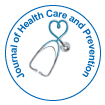Drivers and Impact of Emerging Infectious Diseases on Global Health
Received Date: Mar 01, 2025 / Published Date: Mar 28, 2025
Abstract
Emerging infections refer to diseases that have recently appeared in populations or those whose incidence and geographic spread are rapidly expanding. These infections pose significant risks to global health, often leading to economic instability and stressing public health systems. Key drivers of the emergence of infectious diseases include increased human mobility through globalization, climate change, rapid urbanization, antimicrobial resistance (AMR), and changes in agricultural practices. Globalization facilitates the swift spread of diseases across borders, while climate change alters the distribution of disease-carrying vectors such as mosquitoes. Urbanization and population growth increase human-wildlife interactions, promoting the emergence of zoonotic diseases that can cross species barriers, such as Ebola. The growing threat of antimicrobial resistance exacerbates the situation, with the overuse of antibiotics giving rise to resistant bacteria like MRSA and multi-drug-resistant tuberculosis (MDR-TB).
Citation: Sofoulaki SK (2025) Drivers and Impact of Emerging Infectious Diseaseson Global Health. J Health Care Prev, 8: 306.
Copyright: © 2025 Sofoulaki SK. This is an open-access article distributed underthe terms of the Creative Commons Attribution License, which permits unrestricteduse, distribution, and reproduction in any medium, provided the original author andsource are credited.
Select your language of interest to view the total content in your interested language
Share This Article
Recommended Journals
Open Access Journals
Article Usage
- Total views: 83
- [From(publication date): 0-0 - Sep 01, 2025]
- Breakdown by view type
- HTML page views: 58
- PDF downloads: 25
